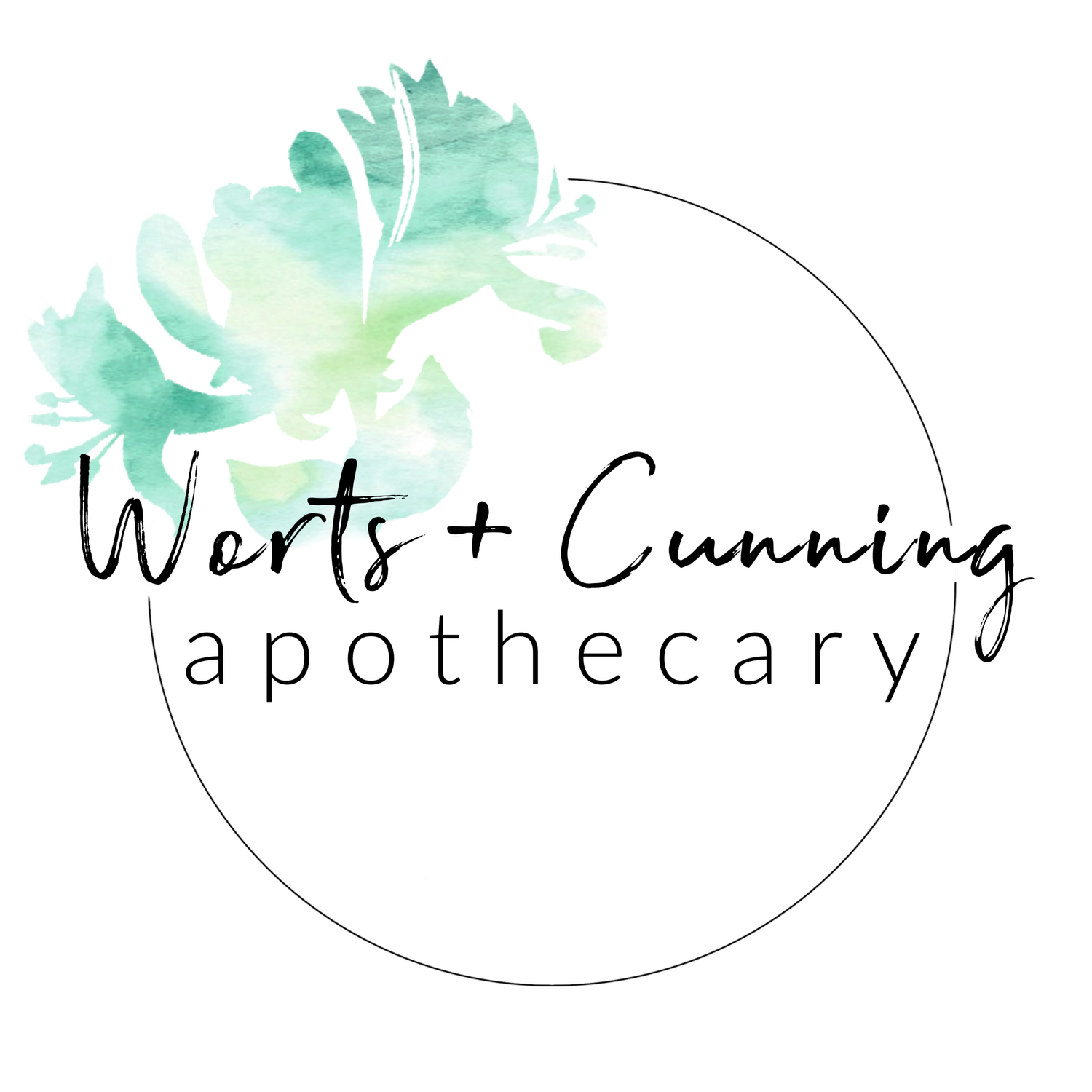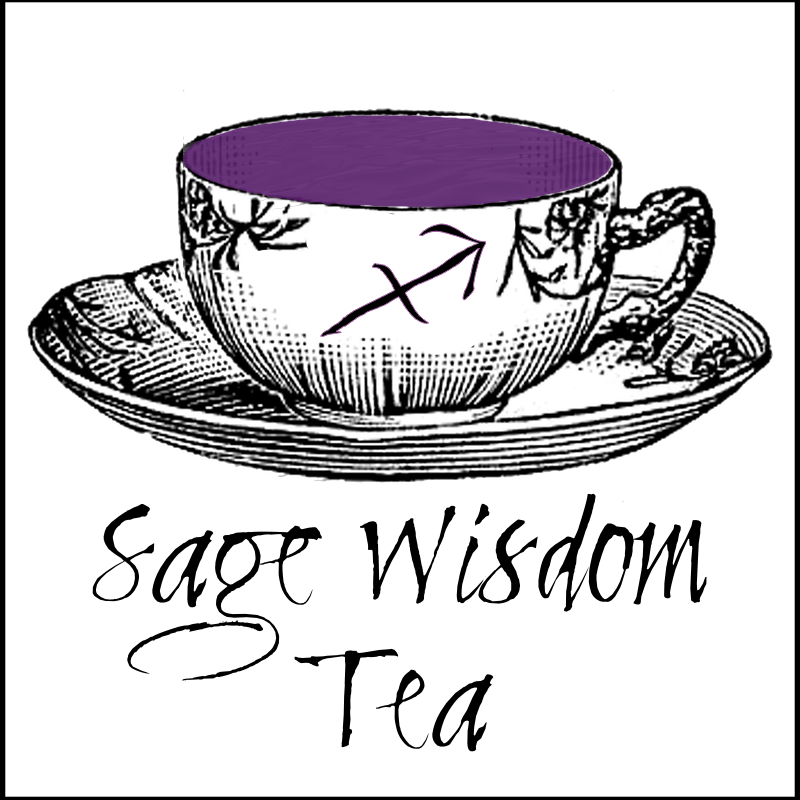Crone of Wisdom: Sage Plant Profile
a radical sabbatical post
The Ancient Greeks, one of the many ancestral lines of traditional western herbalism, called the Goddess of universal remedy, Panacea. She is one of the Holy Ones invoked in the Hippocratic Oath and for herbalists like myself She has lended her name to describing those special herbs - called panaceas - which offer a broad spectrum of healing gifts. Sage (Salvia officinalis), the herb teacher we’ll be meeting today, has long been revered as a panacea not only because of the ways that it supports inherent vitality and longevity, but because it helps us to process knowledge into wisdom.
So let’s meet, Sage!
Sage
Salvia officinalis
Folk Names : Sawge, common sage, garden sage
Element : Earth, Fire, Air
Moon Phase : New Moon
Zodiac Signs : Gemini, Sagittarius
Planets : Jupiter, Moon, Mercury
Parts used : Aerial parts
Habitat : Native to southeastern Europe, but naturalized widely.
Growing conditions : Full sun and well-drained soil with moderate watering.
Collection : Spring before plant flowers.
Flavor : Pungent, bitter
Temperature : Warm
Moisture : Sometimes dry + sometimes oily
Tissue States : Damp/Relaxation, Dry/Atrophy, Cold/Depression, Tension
Constituents : Beta-carotene, B vitamins, niacin, vitamin C, calcium, iron, magnesium, volatile oils, flavonoids, tannin, phenolic acids, phytoestrogens, resin.
Actions : Anaphrodisiac, antifungal, antigalactogogue, anti-inflammatory, antioxidant, antiseptic, antispasmodic, antisudoforic, aromatic, astringent, carminative, choleretic, emmenagogue, estrogenic, expectorant, diaphoretic, digestive, hypotensive, hypoglycemic, nervine, phytoestrogenic, vermifuge.
Main uses : Sage is an impressive panacea of a plant. It’s an herb of longevity, promoting long life and protecting brain function as we age. The herb is warming and strengthening to the body and helps to clear out respiratory congestion. In other words, Sage helps us to breath deeply. Sage has an amphoteric relationship to the fluids of the body which is why it is categorized as both oily and drying in nature. If there is excess fluid, mucus, and catarrh, Sage’s astringent qualities dry out and expels it. The herbs astringency, for example, can be used for excess sweating and heavy periods. If there is lack of moisture, Sage’s oily qualities come into play, lubricating dry and atrophied passageways and organs of the body. The herb is used as part of weaning as it dries up breastmilk.
Sage is well-known as a circulatory tonic, but I would further classify it as a “processing” tonic in that it not only helps to move blood, heat, and information throughout the body, but it helps us to process these parts of ourselves as well. The herb moves energy downward from the crown of the head through the feet which is one of the reasons that Sage helps to calm us down, get restful sleep, and help with digestion.
As a digestive tonic, Sage assists us with processing and digesting fats as well as nutrients from our foods. Look for signs of flatulence and cold digestion. The herb can be used for both chronic and acute infections, especially when fatigue is present. It’s a powerful herb that can be used for everything from the common cold to Staph aureus infections. As a neuroprotective brain tonic, Sage assists with the processing of information and memory, by protecting and improving cognitive function. Additionally, Sage helps to relieve the Tension Tissue State, helping someone shift from being reactive to receptive.
Topically, Sage is a great addition to hair rinses, helping to prevent hair loss, reduce dandruff, and even return or improve the color of the hair. It is also an excellent herb for burning and all varieties - not just the over-harvested and dangerously endangered White Sage (Salvia apiana) variety - are wonderful for cleansing the energy of body and place. One of my favorite ways to use Sage is as a gargle for sore throats and canker sores in the mouth. It can also be used topically for cuts, burns, bruises, bites and stings. It makes a very effective pain and inflammation-relieving compress for swollen and sprained joints.
Magickal uses : Sage is probably best known magically as “smudge” and it works powerfully to cleanse a space. But please do not purchase White Sage (Salvia apiana) but grow your own and protect the few remaining plants in the wild. The plant has been dangerously overharvested in the name of spiritual practice which is a fundamentally un-spiritual act. The great news is that other Sages can be used in place of White Sage including Black Sage (Salvia apiana) and Garden Sage, both of which can be harvested sustainably. Use in spells of longevity and immortality. A great herb not only for physical health but for spiritual health. Use in rites of grieving. An herb of the Crone, work with Sage to connect with the Old One.
The Sage Personality : Every one of us is growing and maturing. Some of the time we feel able to learn from our growth, develop as people, and feel a little bit wiser at the end of the day. Other times aging and growing feels ungraceful, traumatic, and miserable. Sage is particularly useful for folks for whom the latter is true, especially if their stall in maturation is a chronic one. The Sage personality isn’t a classic victim or martyr type but is more often fixated on being ill-fated. They might be able to learn from their previous life experiences in a logical manner, but the wisdom has a difficult time permeating into their body. Sage folks often struggle with their body, bodily changes, and signs of aging. If they are so dissatisfied with their physical form why would they want to inhabit it deeper? Fortunately, Sage isn’t here to force us to be embedded in a body we struggle with but to learn how to descend into the wisdom that resides in our physical form without getting hung up on it. In a state of balance, Sage folk are the wisdom keepers and elders (regardless of age) that we are always in need of.
Contraindications : Avoid large doses during pregnancy. Avoid while nursing (it dries up the milk). In very large doses, its thujone content may adversely affect those with epilepsy, high blood pressure or kidney disease.
Dosage : Standard dosage. Hot tea to induce sweating, cold tea to stop sweating and discharge. 1 tsp per 8 oz water; Adults 30 - 60 drops tincture or 1 - 10 drops for drop dosage.
White Sage Smudging Alternatives
Since White Sage (Salvia apiana) is endangered, unless you are growing it on your own (which you should to help our beloved survive), I strongly encourage you to use a different herb for the purposes of smudging. Here is a short list of herbs that offer a wonderful alternative to White Sage as a smudge:
Garden Sage (Salvia officinalis)
Juniper (Juniperus officinalis)
Cedar (Cedrus spp.)
Lavender (Lavandula officinalis)
Rosemary (Rosmarinus officinalis)
Mugwort (Artemisia spp.)
Myrrh (Commiphora myrrha)
Frankincense (Boswellia spp.)
Copal (Protium copal)
Pine (Pinus sylvestri)
Smoke-Free Smudging Alternatives
Smoky smudge may be popular but it’s not always feasible (enclosed spaces, housing restrictions, allergies, etc) and there are plenty of smoke-free ways to cleanse a space.
Room Spray with salt and/or essential oils and/or flower essences
Crystals placed in a room or waved through the aura
Sound including your voice, bells, chimes, singing bowls and other instruments
Candles made of high-quality wax
Sunlight and fresh air
Croaking Toad Cough + Sore Throat Oxymel
An oxymel is a form of herbal syrup combining honey (or other liquid sweetener like agave or coconut syrup) with raw apple cider vinegar. Croaking Toad is a great remedy to have during cold and ‘flu season as it contains a combination of soothing expectorants and vitality supporting herbs to help us find our way back to feeling well.
Begin by combining the following dried herbs:
1 part Licorice Root (Glycyrrhiza glabra)
1 part Marshmallow Root (Althea officinalis)
1 part Elecampane Root (Inula helenium)
1/2 part Sage Leaf (Salvia officinalis)
1/4 part Chlorella Powder (Chlorella vulgaris)
Place all herbs in a glass jar with a tight sealing lid. Since we are using raw apple cider vinegar as our menstruum, you might choose to use a plastic lid or place wax paper between the metal lid and the blend to prevent corrosion. Cover your herbs with (preferably local) raw apple cider vinegar so that there is roughly 3/4 inch of the vinegar floating above or below the herbs. Let your blend brew for a few weeks - I typically brew all of my extracts for one cycle of the Moon.
Once ready, strain the herbs from the vinegar. Then, mix local raw honey with your herbal vinegar. My weight ratio for the vinegar to honey is 1 part vinegar to 6 parts honey. Basically, add honey to taste. If you want a sweeter elixir or oxymel, that is less herbally potent, add more honey. For a more herbally potent oxymel, add less honey. Stir together the honey and vinegar until they dissolve into one another in a loving embrace of healing wellness. Bottle and store in a cool dark place. I store mine in the refrigerator.
A dose of 1 teaspoon - 1 tablespoon is recommended up to 3 times daily during times of cough and sore throat. You'll want to refrigerate your Croaking Toad Oxymel use within 6 - 12 months.
As I am currently off on sabbatical for three cycles of the Moon, this post was autoscheduled (you can find out more here). May these words have arrived with the magick of not quite knowing where it’ll land, but choosing to chance it anyways. Want to know when I get back? Sign-up for Magick Mail below.
I look forward to connecting with you all again upon my return.
This post was made possible through patron support.
❤︎ Thanks, friends. ❤︎


















